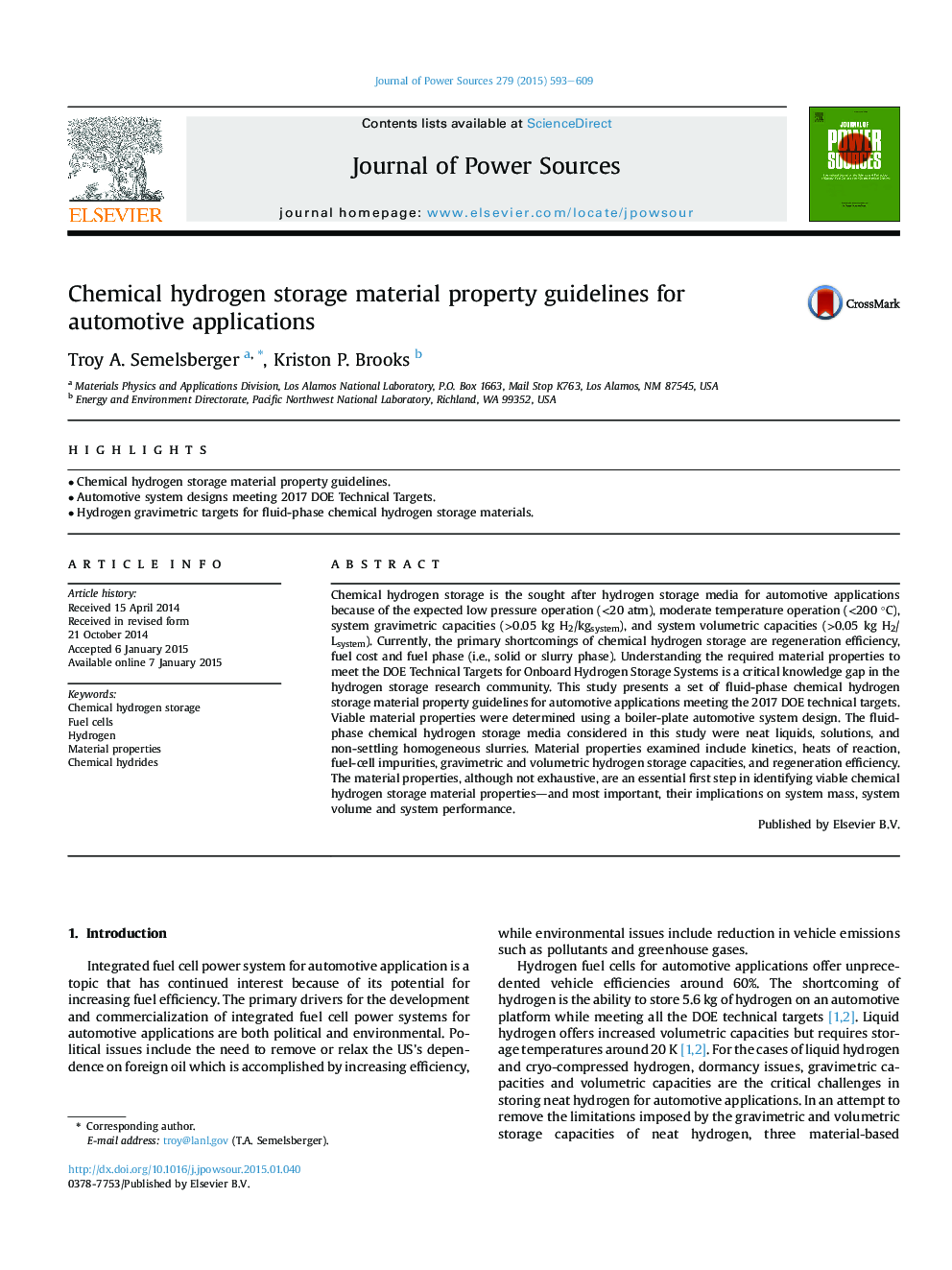| Article ID | Journal | Published Year | Pages | File Type |
|---|---|---|---|---|
| 7733564 | Journal of Power Sources | 2015 | 17 Pages |
Abstract
Chemical hydrogen storage is the sought after hydrogen storage media for automotive applications because of the expected low pressure operation (<20 atm), moderate temperature operation (<200 °C), system gravimetric capacities (>0.05 kg H2/kgsystem), and system volumetric capacities (>0.05 kg H2/Lsystem). Currently, the primary shortcomings of chemical hydrogen storage are regeneration efficiency, fuel cost and fuel phase (i.e., solid or slurry phase). Understanding the required material properties to meet the DOE Technical Targets for Onboard Hydrogen Storage Systems is a critical knowledge gap in the hydrogen storage research community. This study presents a set of fluid-phase chemical hydrogen storage material property guidelines for automotive applications meeting the 2017 DOE technical targets. Viable material properties were determined using a boiler-plate automotive system design. The fluid-phase chemical hydrogen storage media considered in this study were neat liquids, solutions, and non-settling homogeneous slurries. Material properties examined include kinetics, heats of reaction, fuel-cell impurities, gravimetric and volumetric hydrogen storage capacities, and regeneration efficiency. The material properties, although not exhaustive, are an essential first step in identifying viable chemical hydrogen storage material properties-and most important, their implications on system mass, system volume and system performance.
Related Topics
Physical Sciences and Engineering
Chemistry
Electrochemistry
Authors
Troy A. Semelsberger, Kriston P. Brooks,
